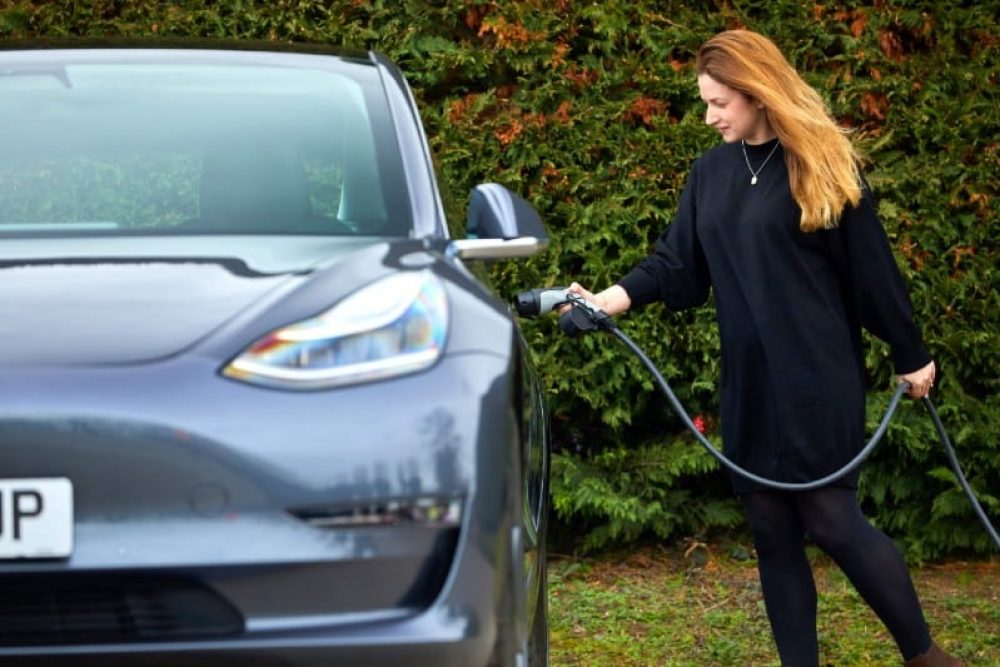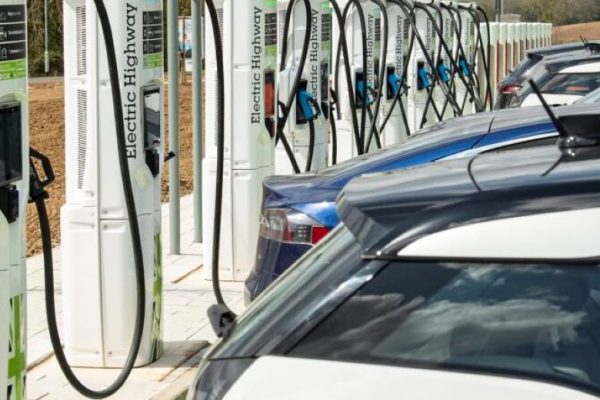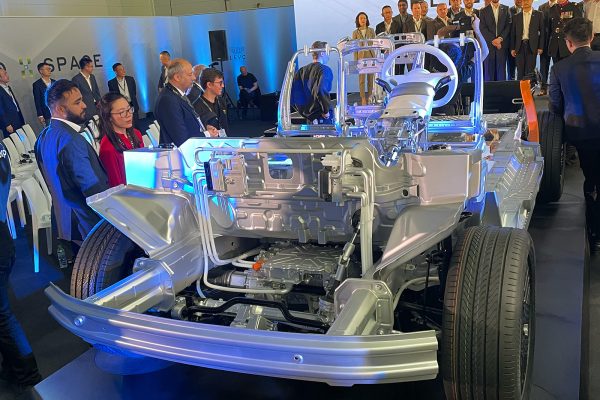GREEN number plates are set to be rolled out from autumn to help encourage drivers to make the switch to electric vehicles, but how easy is it for businesses to adopt EVs?
Electric vehicle leasing company DriveElectric, shares ten actions that companies can take to convert their fleets to electric.
1. Look at whole life costs
Electric vehicles can be more expensive to buy than petrol or diesel equivalents, but whole life costs of EVs are typically cheaper.
• Employees switching to electric company cars are substantially better off since April 2020 when Benefit in Kind (BIK) company car tax for EVs reduced to 0%.
An employee taxed at 40%, driving 20,000 miles a year, would save £1,916 annually by swapping to an electric car such as a Tesla Model 3 Standard Range Plus compared to a BMW 330e M Sport plug-in hybrid.
The company would save £662 in employer’s class 1A National Insurance and £1,992 in fuel costs against HMRC Approved Fuel Rates. In total the savings would be £4,570 in just one year.
• EVs are also typically 30% cheaper to maintain than their internal combustion engine alternatives because they have fewer moving parts.
• There’s no road tax to pay on EVs.
• The benefits get even better in London. Fully electric vehicles are exempt from the capital’s Congestion and Ultra Low Emission Zone charges. This saves more than £5,000, compared to a Euro 5 diesel entering Central London daily over 45 weeks.
2. Carry out a fleet review
Understanding the needs of a business is essential before recommending where electric cars or vans can work best. A review of an organisation’s current fleet can be done in a practical way that doesn’t have to be over-engineered.
3. How are vehicles used?
What are the vehicles used for, what distances do they cover, what routes are they driven on? Electric vehicles typically now offer driving ranges of around 150-350 miles, meaning that whether a fleet’s cars travel less than 100 miles per week or a few hundred miles every day, there’s something to suit all needs.
4. Review the latest EVs that are available
What electric vehicle options are available? A wide range of new electric cars and vans are coming to market during 2020, with options to suit all kinds of needs, tastes and budgets.
5. Ensure replacement vehicles are fit for purpose
Can the proposed replacement vehicles do the job? Whether the requirement is for urban deliveries or long motorway journeys, it’s likely that there will be an EV that’s right for the task.
6. Test drive/trial the EVs
Proposed EVs need to be driven, and ideally a trial of at least a few days should be arranged. DriveElectric also offers the ‘try before you buy’ FlexiHire option for businesses, allowing an electric car or van to be tried out over a period such as three months.
7. Implement charging solutions
EVs don’t need to visit petrol stations, but they do need to be charged. DriveElectric’s experience shows that charging and range are the biggest concerns for fleet managers, but there’s an increasing range of home, workplace and public charging solutions.
• The Workplace Charging Scheme allows a company to claim £350 per charging point installed at a workplace, up to a maximum of 40, which could mean a saving of up to £14,000.
• In terms of public charging, as at 30 June 2020 there were 18,583 EV charge points with 32,247 connectors at 11,599 locations in the UK.2 There are now more EV charge points than traditional fuel stations, and many of these are equipped with rapid chargers that can boost an EV’s battery from empty to 80% in just 30 minutes, making long journeys in EVs much easier.
8. Energy – make it renewable
EVs have no tailpipe emissions, meaning there’s no negative impact on local air quality, and they can also be charged using zero CO2 renewable energy. There are energy tariffs for EV drivers which use renewable energy and cost less than 5p per kWh.
Multiplying the cost of the energy going into the car by its battery size will give the cost of a full charge, meaning that fully charging a Nissan LEAF could cost as little as 5p x 40kWh = £2, giving a real-world driving range of around 150 miles.
This shows that, along with Benefit in Kind tax, the biggest saving you’re likely to make on an EV compared to a petrol or diesel vehicle is on fuel.
9. Tie in with corporate social responsibility
The adoption of EVs should be part of a company’s corporate social responsibility/environmental/
10. Involve the employees
Employees want to be part of moves to go green – engage with them and harness their enthusiasm. Apart from delivering improved air quality, employees prefer the driving experience of EVs.
DriveElectric can help organisations with all of the areas above, typically saving money as well as slashing emissions.
Mike Potter, Managing Director of DriveElectric, said: “More and more businesses want to switch to electric vehicles, but may need help on their journey. That’s where DriveElectric comes in, as we have worked with many organisations to successfully convert their fleets to electric.
“This is the year to do it, with zero percent company car Benefit in Kind tax for pure electric vehicles already saving thousands of pounds per year for company car drivers, and now the government is reported to be looking at other measures to encourage a move to EVs as part of a green economic recovery.”








